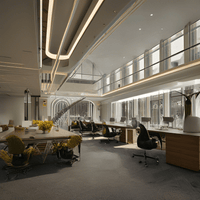LED Lighting in Commerce: Bright Spaces, No Bugs Allowed!
Over the past decade, LED lighting has rapidly gained popularity across many sectors due to its energy efficiency, cost savings, and design flexibility compared to traditional lighting sources. As homes, businesses, and municipalities continue switching to LED bulbs and fixtures, some have wondered whether the bright, energy-efficient lights also attract annoying, unwanted insect pests.
While all light sources can draw some bugs, LEDs offer unique advantages in repelling insects compared to fluorescent or incandescent bulbs. With mindful selection and placement, organizations can implement LED lighting to illuminate commercial, educational, and public environments while deterring problematic bug populations.
LED Lighting in Commercial Spaces
Indoor and outdoor commercial spaces rely heavily on lighting to create ideal environments. LED solutions offer bright, consistent illumination while mitigating pest issues in settings like retail, healthcare, and hospitality.
Lighting Product Displays and Shopping in Style
In retail stores and shopping malls, lighting plays a crucial role in highlighting merchandise, creating ambiance, and attracting shoppers. Unfortunately, conventional lighting often attracted swarms of insects interfering with shopping experiences.
LED technology provides retailers an innovative lighting solution to illuminate displays in a stunning yet pest-free manner:
- LED track lighting and spotlights effectively showcase products without drawing bugs to warm shelves and cases. Directional, focused beams concentrate useful light precisely where needed.
- Cool white 5000-6500K LEDs emit less of the yellow and red spectra that attract many insects. Bright lighting detracts less when devoid of bug-enticing wavelengths.
- Smart LED fixtures with motion sensors automatically reduce lighting when no customers are browsing to avoid attracting bugs to vacant areas.
- Regular dusting and cleaning of LED lights prevents dirt and grime accumulation that draws insects. Proper maintenance enhances visual appeal while repelling pests.
Creative use of LED technology allows retail lighting designers to craft captivating store experiences free of bothersome pests.
Curbing Critters in Hospitality Settings
In restaurants, hotels, and event venues, lighting performs the crucial task of setting ambiance to relax or energize patrons. Unfortunately, many traditional lighting options also attracted problematic insects.
Thankfully, intelligent LED choices can prevent pests from disturbing guests:
- Warmer, amber-hued 2700-3000K LEDs contain minimal blue light that attracts bugs yet still provide welcoming glows for dining and lodging spaces.
- LED recessed can lighting discretely illuminates rooms without insects congregating around bulbous ceiling fixtures.
- In outdoor restaurants and venues, citronella candles placed near strategically angled LED spotlights provide additional bug control.
- COB and chip-on-board LEDs distribute light evenly from solid light sources, avoiding the complaints of buzzing and flickering from older fluorescent tubes.
With thoughtful LED selection, hospitality lighting designers can craft relaxing, upscale experiences free of unwelcome pest issues.

Supporting Health in Hygienic Healthcare Settings
In healthcare facilities like hospitals and clinics, lighting critically impacts patient outcomes and staff performance. But conventional lighting choices often compromised hygiene by attracting insects.
Advanced LED solutions provide the reliability, brightness, and pest control required in medical settings:
- Tightly sealed, IP65-rated waterproof LED fixtures prevent dust and insects from accumulating in deteriorated fixtures.
- LEDs optimized for high color rendering (CRI 90+) accurately convey skin tones and assist medical examinations without drawing bugs to warmth and UV rays.
- LED troffers distribute glare-free overhead lighting compared to bug-catching lens panels in fluorescent troffers.
- Motion-activated LEDs illuminate hallways and rooms only when needed, avoiding continuously lit environments favored by pests.
By evaluating lighting needs and patterns, healthcare facilities can implement LED solutions improving patient healing, hygiene, and experiences.
Lighting the Way in Educational Settings
Proper illumination in educational settings boosts learning, attention, and outcomes from grade school to university. LED solutions offer schools and campuses the dual benefits of eco-friendly lighting and insect control.
Fostering Learning While Deterring Pests
In K-12 classrooms, lighting subtly influences students' moods, focus, and retention. Unfortunately, legacy bulbs created distracting environments by attracting insects.
LEDs enhance learning spaces without drawing flies and spiders:
- Overhead LED panel lights provide uniformly dispersed ceiling illumination without noticeable glare.
- Amber or day-simulating LEDs reduce eye fatigue versus harsh fluorescent lighting while emitting minimal bug-drawing wavelengths.
- Dimmable tunable-white LEDs adjust from stimulating cool-white hues to calming warm tones to match activities and deter insects.
- Maintenance crews can quickly clean LED fixtures to remove webs and debris that accumulate on aging fluorescent troffers.
By evaluating tasks and capacities, K-12 campuses can engineer LED-lit spaces promoting productivity and knowledge intake while repelling pests.
Deterring Distractions in Higher Education
University campuses balance numerous lighting needs from dorms to libraries to stadiums. Conventional technology again fell short by attracting insects.
LED solutions deliver appropriate, pest-free illumination across campus:
- Libraries enjoy glare-free LED task lighting enabling undistracted reading and research compared to bug-filled desk lamps.
- Motion-sensing LED security lights around dorms provide visibility while avoiding constantly-lit entryways favored by insects.
- LED stadium and area flood lighting provides vibrant, consistent performance on the field without compromising games with swarming bugs.
- Maintenance crews appreciate the long 50,000+ hour lifespan of LEDs to avoid frequent unsafe bulb changes plagued by pests.
By rethinking needs, campuses can implement advanced LED solutions to enhance learning unimpeded by age-old insect problems.
LED Use in Government and Public Sectors
Public agencies fill diverse lighting roles from municipal buildings to roadways. Eco-friendly LED solutions deliver bright, efficient, pest-free illumination across city and government functions.

Sustainable LED Solutions for Public Offices
Public-serving government facilities like offices, community centers, and municipal buildings require quality interior lighting paired with exterior lighting that often attracted bugs.
LED lighting better serves constituents while reducing environmental impact:
- LED troffers require infrequent maintenance versus frequently replaced fluorescent troffers susceptible to insect infestations.
- Adjustable color temperature LEDs adapt from crisp daylight for paperwork to warmer hues for public meetings.
- LED parking lot lighting operates efficiently at cooler temperatures, emitting less heat and light pollution versus insect-drawing HPS lamps.
- Networked smart LEDs offer granular remote control over color, brightness, and scheduling to optimize visibility and deter pests as needs change.
Municipalities can implement LED lighting to responsibly illuminate public spaces while supporting sustainability and repelling insects.
Deterring Pests in Transportation Environments
From airports to subways to highways, transportation hubs convey millions daily under ample lighting. However, traditional bulbs again fell short by attracting bugs and requiring frequent maintenance.
LED options better support safe, pest-free transit:
- LED luminaire retrofits in train stations convert aging fluorescents to efficient LEDs without attracting insects to renovation waste.
- Cool 6000-6500K white LEDs enhance visibility in parking garages without drawing swarms of nighttime fliers.
- Reflector-enhanced LED high bay fixtures provide glare-free platform lighting without problematic buzzing or flickering.
- Weatherproof LEDs withstand vibration and pollution near highways to remain brightly lit unlike failing HPS fixtures prone to collecting insects.
Purposeful LED installations allow agencies to responsibly light transportation hubs without compromising traveller experiences with long-standing pest problems.
Innovative LED Solutions for Bug Deterrence
Beyond benefits like efficiency and lifespan, cutting-edge LED advancements specifically target insect deterrence for professional spaces.
- Spectral tuning during manufacturing optimizes wavelengths to minimize attraction of location-specific pests.
- Enhanced filtration excludes narrower bands of light minimizing bug interest while retaining illumination quality.
- Advanced reflector designs carefully control stray light emissions that could attract insects.
- Improved sealing and materials prevent dust and grease accumulation while resisting moisture that breeds pests.
- Expanded connectivity and controls enable facilities personnel to instantly adjust lighting variables like color temperature and intensity based on observed pest reactions.
With embedded pest-deterring technologies, modern LEDs move beyond generic illumination to environment-customized lighting that repels problematic regional insect populations.

Making the Switch to LED
When transitioning commercial spaces to LED fixtures, managers should consider:
- Conduct lighting audits to identify problem areas with frequent pest issues that could benefit from LED retrofits first.
- Consult experts to select optimal LED solutions for each unique space based on hours of use, tasks performed, fixture placement, and observed insect habits.
- Start with targeted replacements rather than expensive, full-scale retrofits to test effectiveness before expanding.
- Consider networked smart systems allowing granular remote control over lights to tweak variables like color temperature and intensity based on pest reactions.
- Acquire demos or samples to experience firsthand how different LED products perform before large-scale deployment.
- Verify regional utility incentives which often discount or rebate commercial LED retrofit projects to control insect populations.
- Calculate total cost of ownership including energy savings, maintenance savings, and pest control savings when budgeting.
- Inspect pre- and post-installation to validate the LED lighting strategy achieved the desired results in repelling target insects.
- Educate staff on the environmental and productivity benefits of deterring pests via LED lighting to build support.
With diligent planning tailored to facility needs, commercial spaces can smoothly transition to LED technology and realize the full benefits of enhanced illumination with reduced insect headaches.
Conclusion: Let There Be Smart LED Lighting
With their unique properties, LED lighting solutions enable organizations to brightly illuminate commercial, educational, and public environments while controlling problematic insect populations. Factors like directional distribution, cooler color temperatures, optimized spectrum filtering, and intelligent controls allow LEDs to deter pests and eliminate longstanding lighting issues.
Beyond efficiency gains, advanced LEDs usher in smarter, customized illumination purpose-built to repel locations' specific pest profiles. As LED technology continues progressing, organizations can harness engineered lighting that maximizes visibility and productivity for occupants while respecting the surrounding ecosystems.
The switch to LED represents an overdue opportunity to redraw the relationship between indoor and outdoor environments. By adopting modern LED lighting strategies, commercial facilities can deploy responsible, sustainable lighting solutions that benefit occupants, communities, and wildlife alike. So transition proactively and let pure, bright, pest-free LED illumination transform your organization's spaces.
Bug-Free, Worries Free
Ready to shed legacy lighting headaches? Contact our lighting experts today to start planning custom LED solutions to illuminate your commercial, educational, or municipal environment while controlling insects. We offer free lighting audits, product demos, utility rebate assistance, and comprehensive support from planning to installation. Let's tailor smart LED lighting to meet your exacting performance, efficiency and pest control needs.



